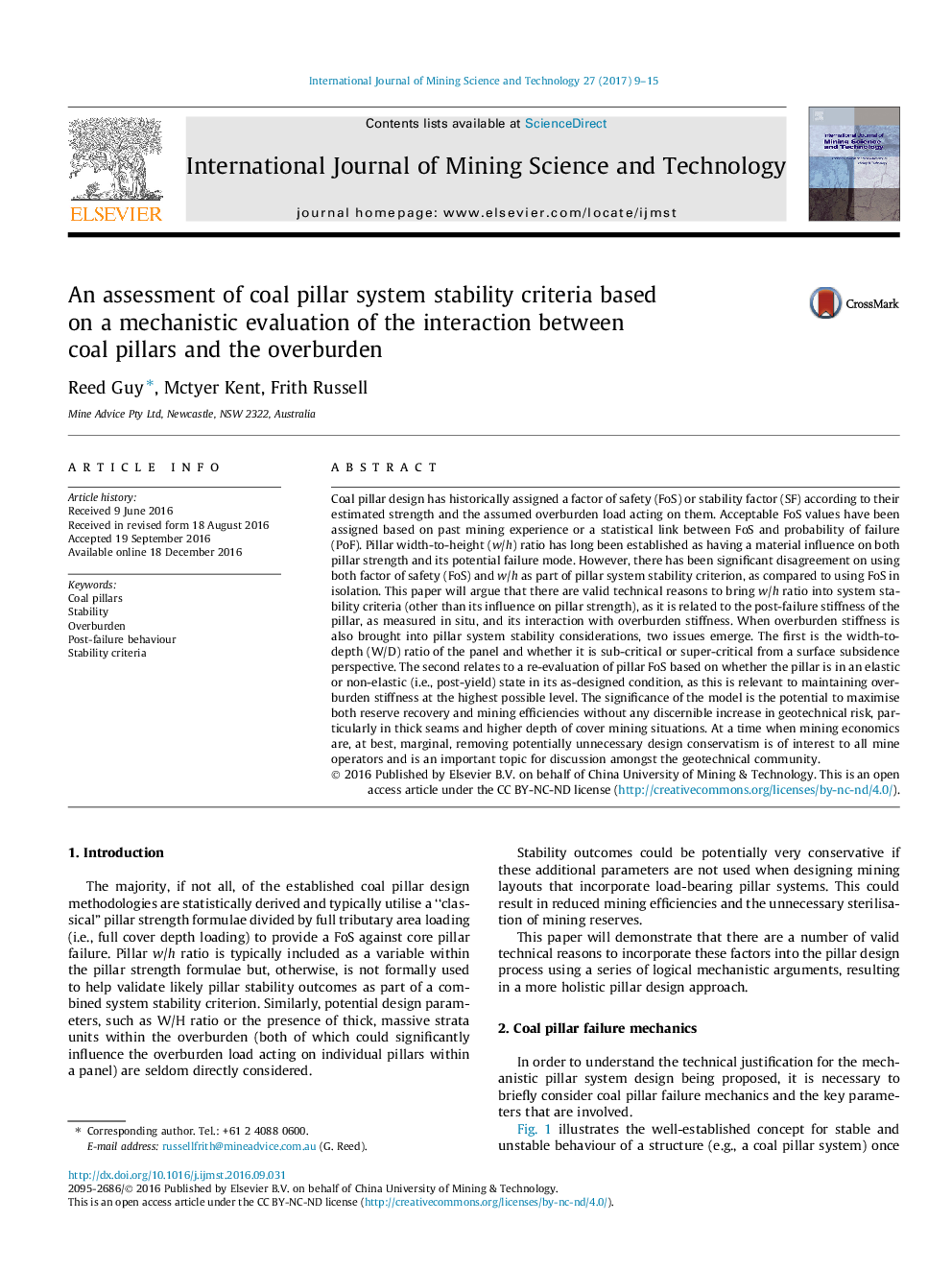| کد مقاله | کد نشریه | سال انتشار | مقاله انگلیسی | نسخه تمام متن |
|---|---|---|---|---|
| 4921917 | 1429523 | 2017 | 7 صفحه PDF | دانلود رایگان |
Coal pillar design has historically assigned a factor of safety (FoS) or stability factor (SF) according to their estimated strength and the assumed overburden load acting on them. Acceptable FoS values have been assigned based on past mining experience or a statistical link between FoS and probability of failure (PoF). Pillar width-to-height (w/h) ratio has long been established as having a material influence on both pillar strength and its potential failure mode. However, there has been significant disagreement on using both factor of safety (FoS) and w/h as part of pillar system stability criterion, as compared to using FoS in isolation. This paper will argue that there are valid technical reasons to bring w/h ratio into system stability criteria (other than its influence on pillar strength), as it is related to the post-failure stiffness of the pillar, as measured in situ, and its interaction with overburden stiffness. When overburden stiffness is also brought into pillar system stability considerations, two issues emerge. The first is the width-to-depth (W/D) ratio of the panel and whether it is sub-critical or super-critical from a surface subsidence perspective. The second relates to a re-evaluation of pillar FoS based on whether the pillar is in an elastic or non-elastic (i.e., post-yield) state in its as-designed condition, as this is relevant to maintaining overburden stiffness at the highest possible level. The significance of the model is the potential to maximise both reserve recovery and mining efficiencies without any discernible increase in geotechnical risk, particularly in thick seams and higher depth of cover mining situations. At a time when mining economics are, at best, marginal, removing potentially unnecessary design conservatism is of interest to all mine operators and is an important topic for discussion amongst the geotechnical community.
Journal: International Journal of Mining Science and Technology - Volume 27, Issue 1, January 2017, Pages 9-15
